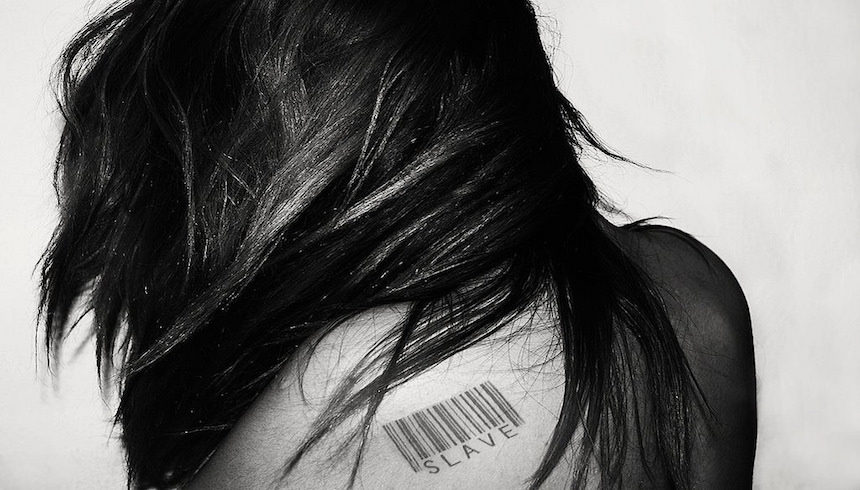New Anti-Human Trafficking Bill passed by Maneka Gandhi, Women and Child Development Minister
‘Slavery still happening today in the form of Human Trafficking’
India has finally unveiled first ever-comprehensive anti-human trafficking law bill on 30th May, 2016. The Bill is titled Trafficking of Persons (Prevention, Protection and Rehabilitation) Bill, 2016.
The Minister of Women and Child Development, Maneka Gandhi spoke on the occasion stating that the Act makes a clear distinction between trafficked and trafficker. It is a victim-oriented law that covers variety of issues that were not covered in the previous laws. There is also a provision for creation of fund for rehabilitation of victims.
Maneka Gandhi drew people’s attention towards other initiatives that the Government has taken towards protection of trafficked victim like Khoya-Paya web portal under which they have also expanded the Childline helpline 1098, initiative taken up with railways like setting up of Child Protection Committees that are responsible for safety and protection of the children at and around the railway stations, pasting posters of missing children in the trains etc.
I have dealt with the concept of human trafficking, its history and the laws that governed trafficking of people in India along with its loopholes and the improvements needed in one of my previous posts. I had mentioned that we need a more streamlined law that ensures safety, compensation and rehabilitation of trafficked victims.
The Bill that is passed now seems to achieve just that.
Analysis of the Anti-Human Trafficking Bill:
The Bill has 12 Chapters with the purpose being to prevent trafficking, to safeguard and provide rehabilitation to victims and create legal, economic and social environment against trafficking.
According to the definitions in Chapter I, ‘child’ is anyone below 18 years of age. Surprisingly though, ‘trafficking’ itself is not defined.
Chapter II of the Act establishes District Anti-Human Trafficking Committee for performing duties in relation to prevention, rescue, protection, medical care, psychological assistance, skill development, need based rehabilitation of victims. The Committee shall consist of a Chairperson, one Member Secretaries and two members.
Chapter III provides for establishment of State Anti-Human Trafficking Committee to advise UT/State Governments and District Committee and Chapter IV provides for establishment of Central Anti -Human Trafficking Advisory Board for implementation of the Act and advise to the Appropriate Government.
Chapter V provides for establishment of Special Agency to conduct investigation of offences under the Act. However, the procedure of investigation and the officers appointed under the agency is not mentioned.
Chapter VI provides for support services that include:
- Protection Homes for providing shelter, food, clothing, counselling and medical care to the rescued victims.
- Special Homes to provide long-term institutional support for the rehabilitation of the victims.
These Homes shall be registered under the Act.
Chapter VII provides for scheme and policies to be released in order to support victims, provide rehabilitation and help them reintegrate into the mainstream society.
Chapter VIII provides that all placement agencies that are defined as body of persons that provide service of employment to any person shall be mandatorily registered.
Chapter IX lays down offences and penalties. If a person who is incharge of Protection or Special Homes violates any provision, he/she shall be liable for imprisonment of one year and fine of less than one lakh.
Strict punishment is levied for use of narcotic, drugs or alcoholic substances while trafficking or use of chemical substances or hormones for exploitation leading to an imprisonment of seven years and fine of more than one lakh.
General violation of any direction passed by an appropriate government attracts a fine of 20 thousand or imprisonment for a term of three months or both.
Laying down a higher penalty would make everyone involved more diligent. The cause calls for everyone to be punctilious while following rules and directions, for which greater punishment in case of violation is necessary.
Chapter X provides for confiscation, forfeiture and attachment of the property of the accused if the circumstances demand unless it affects the interest of a third party. The burden of proof of proving that the property was not used for the commission of the offence lies with the accused.
Chapter XI establishes Special Courts and empowers person prosecuting before the Special Court as Special Public Prosecutor. The court shall order for recovery of any back wages or any other losses that is due to the victim in addition to any other punishment and fine of not less than five lakh rupees.
Chapter XII provides for Anti-Trafficking Fund, enables repatriation of victims to their home state or even country thereby providing necessary protection to foreign victims as well. The Chapter also provides for mandatory reporting on the part of police officers, public servants or employees of homes registered under the Act to hand over custody of the victim to police station or District Anti-Trafficking Committee or in case of a child to Child Welfare committee or any other child care institution within twenty four hours.
Conclusion:
While the Act is a massive advancement from the laws in force earlier. It lacks clarity in various sections. To begin with, it does not define what ‘trafficking’ is.
Like pointed out earlier, while Chapter V provides for establishment of Special Agency for investigation, it does not elaborate on the procedure to be followed, on how it will co-ordinate with the police officials and how different will its functions be from that of the existing policing department.
The role of Special Courts need further elaboration as implementation of Special Courts until now have largely been a failure.
Penalties also need to be improvised on in order to make officials involved more cautious and diligent.
Moreover, the Act does not spell out the relation between its provisions and the provisions of Immoral Traffic (Prevention) Act. The experts are worried that the draft is not comprehensive enough to override this Act.
However, it is to be noted that this is a Draft Bill which will be improvised after accepting suggestions from public and feedback from all Ministries. The Women and Child Development Minister, Maneka Gandhi has said that the final Bill shall be out by the end of next year.
Successful implementation of this Bill will largely depend on the Centre-State co-operation and the rules brought about by the State Governments in order to follow the provisions of this law.
Picture Courtesy: Flickr







